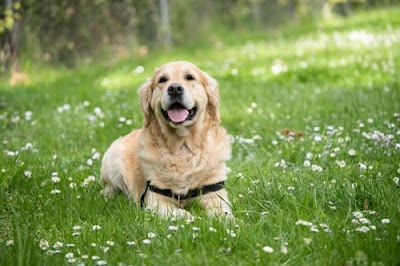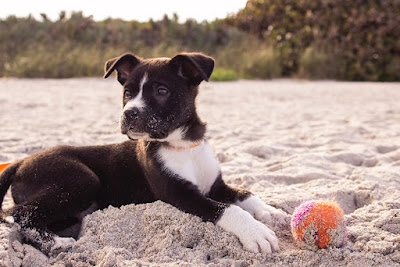Six tips to regulate your dog's barking ( How to train your dog not to bark )
This article answer the question that i got from a lot of people around me: "How To Train A Dog Not To Bark". Here's a listing of six techniques which will facilitate stop your dog from barking. Whereas all of them may be terribly triple-crown, you should not expect miraculous results nightlong. The longer your dog has been active the barking behavior, the longer it'll hold him to vary his ways in which.
Some of these coaching techniques need you to possess a plan on why your dog barks.
Always keep in mind to stay the following pointers in mind whereas training:
- Don't yell at your dog to be quiet—it simply seems like you are barking together with him.
- Keep your coaching sessions positive and upbeat.
- Be consistent therefore you do not confuse your dog. everybody in your family should apply the coaching ways each time your dog barks unsuitably. you cannot let your dog go away with inappropriate barking some times and not others.
#1. Remove dog's motivation
Your dog gets some reasonably reward once he barks. Otherwise, he would not love it. Find out what he gets out of barking and take away it. Do not offer your dog the chance to continue the barking behavior.
** For example: Barking at passersby
- If he barks at individuals or animals passing by the front room window, manage his behavior by closing the curtains or putt your dog in another space.
- If he barks at passersby once he is within the yard, bring him into the house. Do not leave your dog outside alone all day and night.
#2. Desensitize your dog to the stimulation
Gradually get your dog familiar with no matter is inflicting him to bark. Begin with the stimulant (the factor that creates him bark) at a distance. It should be so much enough away that he does not bark once he sees it. Feed him many sensible treats. Move the stimulant a bit nearer (perhaps as little as many inches or some feet to start) and feed treats. If the stimulant moves out of sight, stop giving your dog treats. you would like your dog to be taught that the looks of the stimulant ends up in delicacies (treats!).
** For example: Barking at dogs
- Have a devotee with a dog stand out of sight or so much enough away therefore your dog will not bark at the opposite dog.
- As your friend and her dog acquire read, begin feeding your dog a lot of very delicious treats.
- Stop feeding treats as presently as your friend and her dog disappear from read.
- Repeat the method multiple times
- Remember do not attempt to progress too quickly because it can take days or weeks before your dog pays attention to you and also the treats while not barking at the opposite dog.
 |
| How to train a dog not to bark ? |
#3. Request your dog for one incompatible behavior
When your dog starts barking, request him to try and do one thing that is incompatible with barking. Teaching your dog to react to barking stimuli with one thing that inhibits him from barking, like lying down in his bed.
** For example: somebody at the door
- Toss a treat on his mat and tell him to "go to your home."
- When he is surely getting to his mat to earn a treat, up the ante by opening the door whereas he is on his mat. If he gets up, shut the door instantly.
- Repeat till he stays on his mat whereas the door opens.
- Then increase the problem by having somebody ring the buzzer whereas your dog is on his mat. - --- Reward him if he stays in place.
My friends often ask me: "How to train a dog not to bark ?"
#4. Ignore his barking
Ignore your dog's barking for as long as because it takes him to cease. Which means do not provide him any attention in the least whereas he is barking. Your attention solely rewards him for being uproarious. Do not talk over with him, do not handle him, and do not even check out him. Once he finally quiets, even to require a breath, reward him with a treat.
To achieve success with this technique, you need to wait as long as because it takes for him to cease barking. If he barks for some hour and you finally get thus annoyed that you just yell at him to close up, future time he'll in all probability bark for one hour and a 0,5. He learns that if he simply barks long enough you may offer him attention.
** For example: Barking once confined
- When you place your dog in his crate or in a very gated space, flip your back and ignore him.
- Once he stops barking, turn back, praise him, and provides him a treat.
- As he catches on it being quiet gets him a treat, lengthen the number of your time he should stay quiet before being rewarded.
- Remember to begin little by appreciated him for being quiet for simply some seconds, then operating up to longer periods of quiet.
- Keep it fun by variable the quantity of your time. typically reward him posterior five seconds, then twelve seconds, then three seconds, then twenty seconds, and so on.
#5. Train your dog the "quiet" command
It may sound nonsensical, however the primary step of this method is to train your dog to bark on command. Offer your dog the command to "speak," look ahead to him to bark 2 or 3 times, after that stick a tasty treat ahead of his nose. Once he stops barking to smell the treat, praise him and provides him the treat. Repeat till he starts barking as presently as you say "speak."
Once your dog will dependably bark on command, teach him the "quiet" command. During a calm surroundings with no distractions, tell him to "speak." once he starts barking, say "quiet" and stick a treat ahead of his nose. Praise him for being quiet and provides him the treat.
** For example: somebody at the door
- When the bell rings, your dog alerts you to the presence of the "intruder" by barking wildly.
- Once you have trained your dog the "quiet" command during a calm surroundings, follow in more and more distracting things till your dog will instantly stop barking once asked to, even once that "intruder" arrives at the door.
#6. Keep your dog tired
And the last tip to answer topic "How to train a dog not to bark" is "Keep your dog tired". Make sure he is obtaining adequate physical and mental exercise each day. A tired dog may be a smart dog and one that is a smaller amount possible to bark from tedium or frustration. Looking on his breed, age, and health, your dog can need many long walks as well as a proficient game of chasing the ball and having fun with some interactive toys.
This post introduces some ways you can train your pet dog; as you know, training a dog is a hard work but if we are consistent and do it right way, we will be success. Want to have the best training program for your pet dog:
click here
 |
| Training your dog not to bark |










